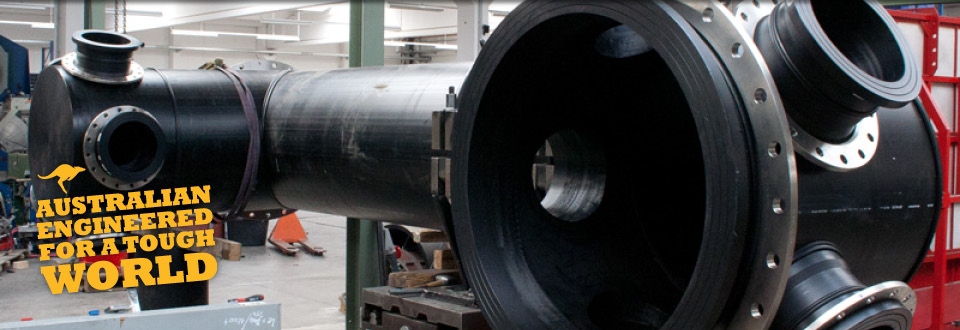Worldpoly FAQ
Frequently Asked Questions
Do you have a poly related question you'd like answered? Send it to customerservice@worldpoly.com, and we'll do everything we can to answer it
What is butt welding?
Butt welding is one of the most common methods for joining polyethylene & polypropylene pipe across the globe. It is a welding process used to join two different pieces of thermoplastic, generally PE100 or PE80. This process involves heating both pieces simultaneously and pressing them together in a controlled process. The two pieces are then cool together and form a permanent bond. When done properly, the weld can be stronger than the host pipe. Butt welding must be performed according to your local welding standards.
What is the difference between butt welding & butt fusion?
The process of joining polyethylene & polypropylene pipe is called different things across the globe, but the basic process is the same.
In Australia, this can be called butt welding, poly welding, etc., where as in the US it is commonly referred to as butt fusion, fusion welding, etc.
What is debeading, and why do you do it?
Removing the internal bead after performing a butt weld is commonly referred to as 'debeading'.
For a vast majority of jobs around the world, this is not even considered, but a small number of authorities use bead removal as a quality control measure. The action of bead removal requires special tooling and additional time before the next weld can be performed.
What is electrofusion welding?
Electrofusion welding is the process of joining two plastic pipes together using a single use coupler that has an integrated wire heating coil. The electrofusion control unit supplies electricity to this coil, heating it up and causing the plastic to melt. When this cools, a gas-tight joint is formed.
When the electric heating coil is energised, the plastic material touching it melts and forms an expanding pool of molten plastic which comes into contact with the surface of the pipe. The continued heating causes the pipe surface to melt and then mix with the molten plastic of the fitting. This mixing is vital to produce a good weld. Likewise, the correct delivery of energy to the heating coil is vital to create the molten plastic and allow the process to happen.
At the end of the heating cycle, the fitting and pipe are left to cool and the molten material solidifies to create a solid and sound joint. During this cooling phase, the joint must be kept completely still as movement can crack the interface and cause a leak path.
To ensure a good quality joint, the following need to be true:
- The heating coils need to be as close to the pipe/fitting interface as possible.
- The heat distribution is uniform over the length of the "hot zone".
- Melt pressure and temperature are accurately controlled.
- The heating coils are protected from damage prior to and during the welding.
The welding units offered by Worldpoly use microprocessor technology to ensure that the correct energy is applied to the electrofusion joint, giving the perfect weld. Units designed to weld gas fittings are fully approved to the Gas Industry Standards and are CE marked.
Can PE80 be welded to PE100?
Yes it can, but due to the materials being different, you will notice a difference in the bead.
What is the difference between layer, narrow & 2-piece clamps?
Depending of what sort of but welding you are doing, what part of the world you are in, and your preferences, you will use different types of clamps for different purposes:
Layer clamps
- The most common clamp supplied with the field welding machines
- They resemble the skin of a onion, with each size fitting in to the size above it
- A complete set includes eight half circles (4 full circles) of each of the specified size. For example, a Worldpoly160 machine comes with 8x ½ circles of each of the following: 160x140, 140x125, 125x110, 110x90, 90x75, 75x63 & 63x50mm clamps
- When supplied as spare, they are sold as ½ circle clamps
2-piece clamps
- Less common outside Europe, and sometimes called ‘European style clamps’
- Recommended for high-force machines
- These are used instead of the layer clamps when desired
- For the 160 machine, these are available in 160x140, 160x125, 160x110, 160x90, 160x75 & 160x63mm clamps
- When supplied as spare, they are sold as ½ circle clamps
Narrow clamps
- Sometimes called knife clamps
- 1 circle (2x ½ circles) is used in the 4th/last main clamp to allow pre-fab bends/elbows to fit in the main frame
- For the 160 machine, these are available in 160x140, 160x125, 160x110, 160x90, 160x75 & 160x63mm clamps
- They do not fit into each other like the layer clamps – each size is its own complete ½ clamp
- When supplied as spare, they are sold as ½ circle clamps





 Copyright © Worldpoly Australia 2012. ABN 56092 362 260.
Copyright © Worldpoly Australia 2012. ABN 56092 362 260.
